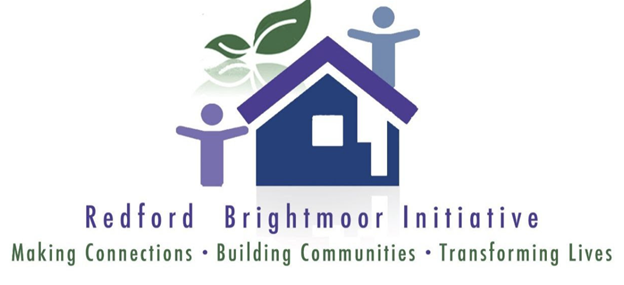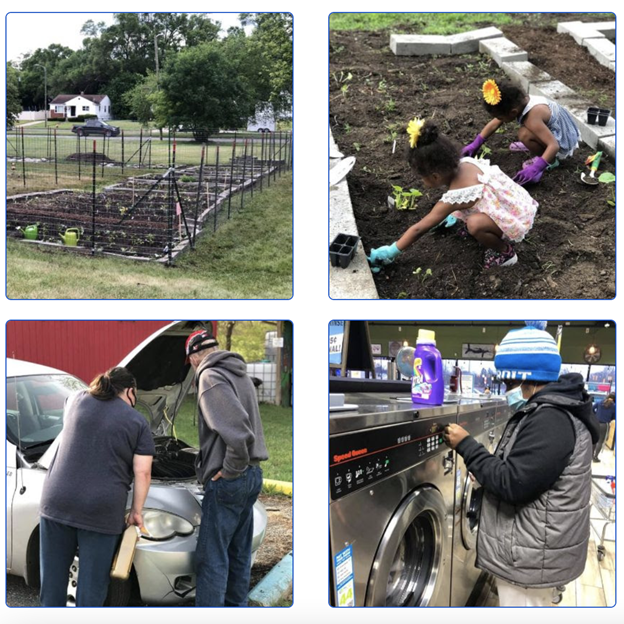Fellowship Spotlight: ceciel Zhong
The following was written by Ceciel Zhong as a part of the 2021 TechShift Summer Fellowship program.
Hi everyone, my name is Ceciel and I am a junior undergrad at the University of Michigan. This summer, I worked with Redford Brightmoor Initiative (RBI) as a TechShift fellow revamping their online presence. RBI is a nonprofit coalition in metro Detroit that builds community and supports youth and adults through meaningful employment and service. They have two locations providing community-based services, which encompasses a wide variety of programs. Some examples of their programs include a free store which has been visited by over 100s of shoppers, where people can get household items, bedding, towels and diapers. Their community lunch program has distributed more than 1,000 "to go" lunches. Other programs include the community garden, mobile showers, wash Wednesday laundry program covering nearly 250 loads of laundry, a visiting mechanic helping with car-related problems, and a Mobile Dental Team that spends 3 days a week at the location doing cleanings, check-ups, x-rays and extractions.
Image credit: rbidetroit.org
For me, it is truly amazing how RBI transforms the place into serving anything that relates to the wellness of people living in this area. RBI calls for donations that are both monetary and non-monetary, such as extra items or volunteer times that different households have, and they will direct them to people in need of those items. As a first-generation college student, I received a lot of contributions from my own community when I went off to college. Therefore, it’s very natural for me to admire how RBI is actively doing the same for its neighbors who are underserved.
My project helps revamp their online presence, including website and email campaigns. This builds a bridge between the public and the organization. Despite RBI being a local organization, I have learned that people who support it can come from various places across the country. Therefore, this project facilitates more publicity through web design and expands the donation source for RBI.
During the summer, I created website mock-ups, conducted user research interviews, and delivered a preliminary revamped design based on these findings. The goal is to create a friendly and accessible interface with limited time and resources. In the initial meeting with the director, I learned that only potential donors and people who may have the resources to support would visit the website. This means that the clients that RBI serves don’t go there often. Then, my key questions turned to how we can better facilitate the donation process; how to better present the information about what they already do for the community; how to build the feeling that is relevant to RBI and their themes, as well as how trustworthy a nonprofit may come across online, especially during the pandemic when things are more isolated and people couldn’t be in proximity in-person.
Parts of UX Research - Discover, Explore, Test, Listen
Image credit: NN/g
I conducted interviews with 5 of my neighbors and friends living in the metro-Detroit area, 2 previous donors, and 4 people that these donors have connections to. Their ages range from 20 to 60. Although they are not conclusive, it allowed a multitude of angles that I could inspect. Additionally, I posed the question and discussed with my TechShift Summer Fellowship cohort members at our bi-weekly meeting, and learned their answer to what aspects (elements/design choices) on a nonprofit website can prompt people to learn more and support that organization
From these user research interviews, there are several ways that could better persuade potential donors to contribute. First of all, it would be best to showcase some current programs, use more pictures to tell a story, up to date and dynamic information, as well as changing visual elements to make it easier for all vision levels to comprehend with ease.
There are several things I learned from this project and this process. First is the consideration of how this project would be maintained and sustained - it is not enough to just develop and deploy a tool/piece of technology and leave it to the partner org. A recurring theme that I revisited many times over in masterminds meetings with my fellow cohort members is how many times the narrative on technology has been focused on “innovation”, “new”, and how novel piece(s) of technology would affect society in different ways. However, the vast majority of work done by even companies has been maintenance and improvement for existing types of technological systems. Although my work is at a significantly smaller scale, it also requires large consideration from both myself and the nonprofit partner to figure out what are the plans after this site is revamped, and what are the actions for both me and other community members moving forward. I am surely continuing to work for this site and respond to requests, until I can responsibly transfer and explain to community members who might be taking over the role to update the site sometime in this school year.
Moreover, I realized the acute need for tech support for not-for-profit organizations. For students like me, it seems like the attention has always been directed towards what’s new and what’s coming out next in the larger entrepreneurial-driven technology ecosystem. While many school’s curriculum has engaged learning curriculum such as project-based coursework with clients, the focus has been business growth and how to maximize profit values.
At the same time, this project helps me to think about what it means to actively give back to the community, curb the harmful effects of gentrification, and what it means to have all the people’s needs in my local community met. The work done in RBI is part of many other efforts to reimagine what need-based service organizing looks like. The services RBI provides to local residents might not be eye-catching like the newest gadget on the market, but it is what people, including me, have taken for granted.
With the school starting, and as TechShift’s chapter at the University of Michigan expands its own community-based projects, I will refer to this experience moving forward. It is essential for thinking critically about what community-based care can mean for all of us, whether we live in the same geographic area or not. Last but not least, when I think about future careers in the human-centered interface design field, what I have learned from talking to other fellows will certainly come back often.



